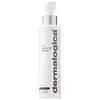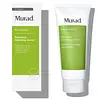What's inside
What's inside
 Key Ingredients
Key Ingredients

 Benefits
Benefits

 Concerns
Concerns

 Ingredients Side-by-side
Ingredients Side-by-side

Water
Skin ConditioningSodium C14-16 Olefin Sulfonate
CleansingLactic Acid
BufferingPPG-2 Hydroxyethyl Cocamide
EmulsifyingSodium Cocoamphoacetate
CleansingAcrylates/Dimethylaminoethyl Methacrylate Copolymer
Glycol Distearate
EmollientPropanediol
SolventHelianthus Annuus Seed Oil
EmollientAniba Rosodora Wood Oil
AstringentPelargonium Graveolens Flower Oil
MaskingEugenia Caryophyllus Leaf Oil
MaskingRosa Damascena Flower Oil
MaskingEugenia Caryophyllus Bud Oil
MaskingCitrus Limon Peel Oil
MaskingCymbopogon Schoenanthus Oil
MaskingCymbopogon Martini Oil
MaskingCupressus Sempervirens Leaf Oil
MaskingCitrus Limon Peel Extract
EmollientEucalyptus Globulus Leaf Oil
PerfumingTocopheryl Acetate
AntioxidantTocopherol
AntioxidantCI 77891
Cosmetic ColorantCocamidopropyl Hydroxysultaine
CleansingPentylene Glycol
Skin ConditioningCaprylyl Glycol
EmollientCaprylic/Capric Triglyceride
MaskingEthylhexylglycerin
Skin ConditioningTetrasodium Glutamate Diacetate
Sodium Hydroxide
BufferingCitric Acid
BufferingBenzalkonium Chloride
AntimicrobialLinalool
PerfumingEugenol
PerfumingLimonene
PerfumingCitronellol
PerfumingWater, Sodium C14-16 Olefin Sulfonate, Lactic Acid, PPG-2 Hydroxyethyl Cocamide, Sodium Cocoamphoacetate, Acrylates/Dimethylaminoethyl Methacrylate Copolymer, Glycol Distearate, Propanediol, Helianthus Annuus Seed Oil, Aniba Rosodora Wood Oil, Pelargonium Graveolens Flower Oil, Eugenia Caryophyllus Leaf Oil, Rosa Damascena Flower Oil, Eugenia Caryophyllus Bud Oil, Citrus Limon Peel Oil, Cymbopogon Schoenanthus Oil, Cymbopogon Martini Oil, Cupressus Sempervirens Leaf Oil, Citrus Limon Peel Extract, Eucalyptus Globulus Leaf Oil, Tocopheryl Acetate, Tocopherol, CI 77891, Cocamidopropyl Hydroxysultaine, Pentylene Glycol, Caprylyl Glycol, Caprylic/Capric Triglyceride, Ethylhexylglycerin, Tetrasodium Glutamate Diacetate, Sodium Hydroxide, Citric Acid, Benzalkonium Chloride, Linalool, Eugenol, Limonene, Citronellol
Water
Skin ConditioningSodium Cocoyl Isethionate
CleansingGlyceryl Stearate Se
EmulsifyingGlycerin
HumectantStearic Acid
CleansingCetyl Alcohol
EmollientPrunus Armeniaca Kernel Oil
MaskingPalmitoyl Tripeptide-5
Skin ConditioningButyrospermum Parkii Butter Extract
Skin ConditioningCocamidopropyl Dimethylamine
EmulsifyingLactic Acid
BufferingHydrated Silica
AbrasivePhenylethyl Resorcinol
AntioxidantHydrolyzed Corn Starch
HumectantSodium Hydroxide
BufferingUrea
BufferingYeast Amino Acids
HumectantTrehalose
HumectantInositol
HumectantTaurine
BufferingBetaine
HumectantBorago Officinalis Seed Oil
EmollientOenothera Biennis Seed Extract
Skin ConditioningSerenoa Serrulata Fruit Extract
Skin ConditioningPanthenol
Skin ConditioningChondrus Crispus Extract
Skin ConditioningChamomilla Recutita Flower Extract
MaskingSodium Hyaluronate
HumectantImperata Cylindrica Root Extract
Skin ConditioningBenzophenone-4
UV AbsorberButylene Glycol
HumectantPEG-8
HumectantBenzalkonium Chloride
AntimicrobialCarbomer
Emulsion StabilisingXanthan Gum
EmulsifyingPhenoxyethanol
PreservativeCaprylyl Glycol
EmollientChlorphenesin
AntimicrobialParfum
MaskingWater, Sodium Cocoyl Isethionate, Glyceryl Stearate Se, Glycerin, Stearic Acid, Cetyl Alcohol, Prunus Armeniaca Kernel Oil, Palmitoyl Tripeptide-5, Butyrospermum Parkii Butter Extract, Cocamidopropyl Dimethylamine, Lactic Acid, Hydrated Silica, Phenylethyl Resorcinol, Hydrolyzed Corn Starch, Sodium Hydroxide, Urea, Yeast Amino Acids, Trehalose, Inositol, Taurine, Betaine, Borago Officinalis Seed Oil, Oenothera Biennis Seed Extract, Serenoa Serrulata Fruit Extract, Panthenol, Chondrus Crispus Extract, Chamomilla Recutita Flower Extract, Sodium Hyaluronate, Imperata Cylindrica Root Extract, Benzophenone-4, Butylene Glycol, PEG-8, Benzalkonium Chloride, Carbomer, Xanthan Gum, Phenoxyethanol, Caprylyl Glycol, Chlorphenesin, Parfum
 Reviews
Reviews

Ingredients Explained
These ingredients are found in both products.
Ingredients higher up in an ingredient list are typically present in a larger amount.
Benzalkonium Chloride is a preservative. It can cause irritation and worsen eczema.
Caprylyl Glycol is a humectant and emollient, meaning it attracts and preserves moisture.
It is a common ingredient in many products, especially those designed to hydrate skin. The primary benefits are retaining moisture, skin softening, and promoting a healthy skin barrier.
Though Caprylyl Glycol is an alcohol derived from fatty acids, it is not the kind that can dry out skin.
This ingredient is also used as a preservative to extend the life of products. It has slight antimicrobial properties.
Learn more about Caprylyl GlycolLactic Acid is another well-loved alpha hydroxy acid (AHA). It is gentler than glycolic acid but still highly effective.
Its main role is to exfoliate the surface of the skin by loosening the “glue” that holds dead skin cells together. Shedding those old cells leads to smoother, softer, and more even-toned skin.
Because lactic acid molecules are larger than glycolic acid, they don’t penetrate as deeply. This means they’re less likely to sting or irritate, making it a great choice for beginners or those with sensitive skin.
Like glycolic acid, it can:
Lactic acid also acts as a humectant (like hyaluronic acid). It can draw water into the skin to improve hydration and also plays a role in the skin's natural moisturizing factor (NMF) in the form of sodium lactate.
Studies show it can boost ceramide production to strengthen the skin barrier and even help balance the skin’s microbiome.
To get results, choose products with a pH between 3-4.
Lower strengths (5-12%) focus on surface exfoliation; higher strengths (12% and up) can reach deeper in the dermis (deeper, supportive layer) to improve skin texture and firmness over time.
Though it was originally derived from milk, most modern lactic acid used in skincare is vegan. It is made through non-dairy fermentation to create a bio-identical and stable form suitable for all formulations.
When lactic acid shows up near the end of an ingredient list, it usually means the brand added just a tiny amount to adjust the product’s pH.
Legend has it that Cleopatra used to bathe in sour milk to help reduce wrinkles.
Lactic acid is truly a gentle multitasker: it exfoliates, hydrates, strengthens, and brightens. It's a great ingredient for giving your skin a smooth, glowing, and healthy look without the harshness of stronger acids.
Read more about some other popular AHA's here:
Learn more about Lactic AcidSodium Hydroxide is also known as lye or caustic soda. It is used to adjust the pH of products; many ingredients require a specific pH to be effective.
In small amounts, sodium hydroxide is considered safe to use. However, large amounts may cause chemical burns due to its high alkaline.
Your skin has a natural pH and acid mantle. This acid mantle helps prevent harmful bacteria from breaking through. The acid mantle also helps keep your skin hydrated.
"Alkaline" refers to a high pH level. A low pH level would be considered acidic.
Learn more about Sodium HydroxideWater. It's the most common cosmetic ingredient of all. You'll usually see it at the top of ingredient lists, meaning that it makes up the largest part of the product.
So why is it so popular? Water most often acts as a solvent - this means that it helps dissolve other ingredients into the formulation.
You'll also recognize water as that liquid we all need to stay alive. If you see this, drink a glass of water. Stay hydrated!
Learn more about Water